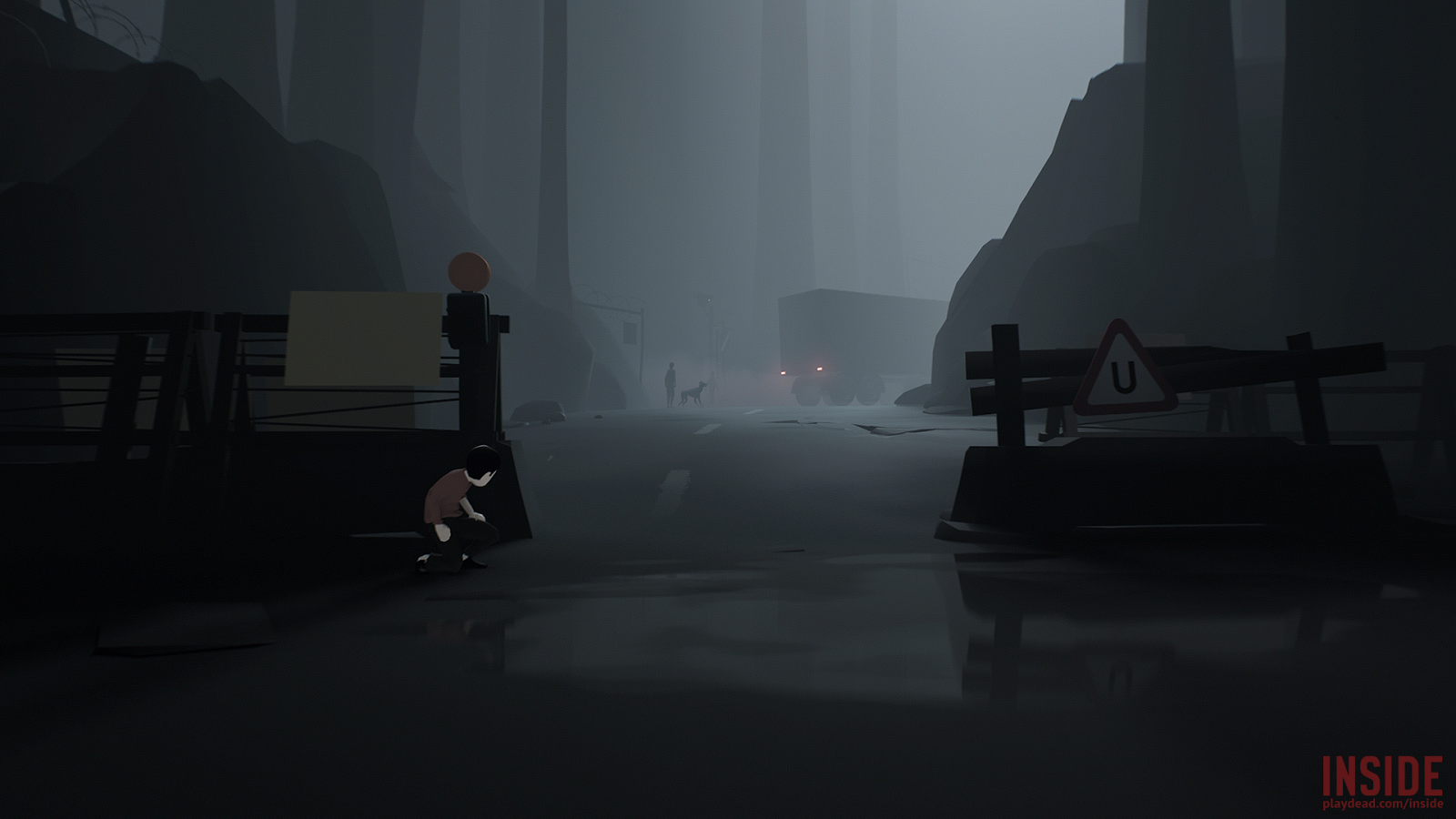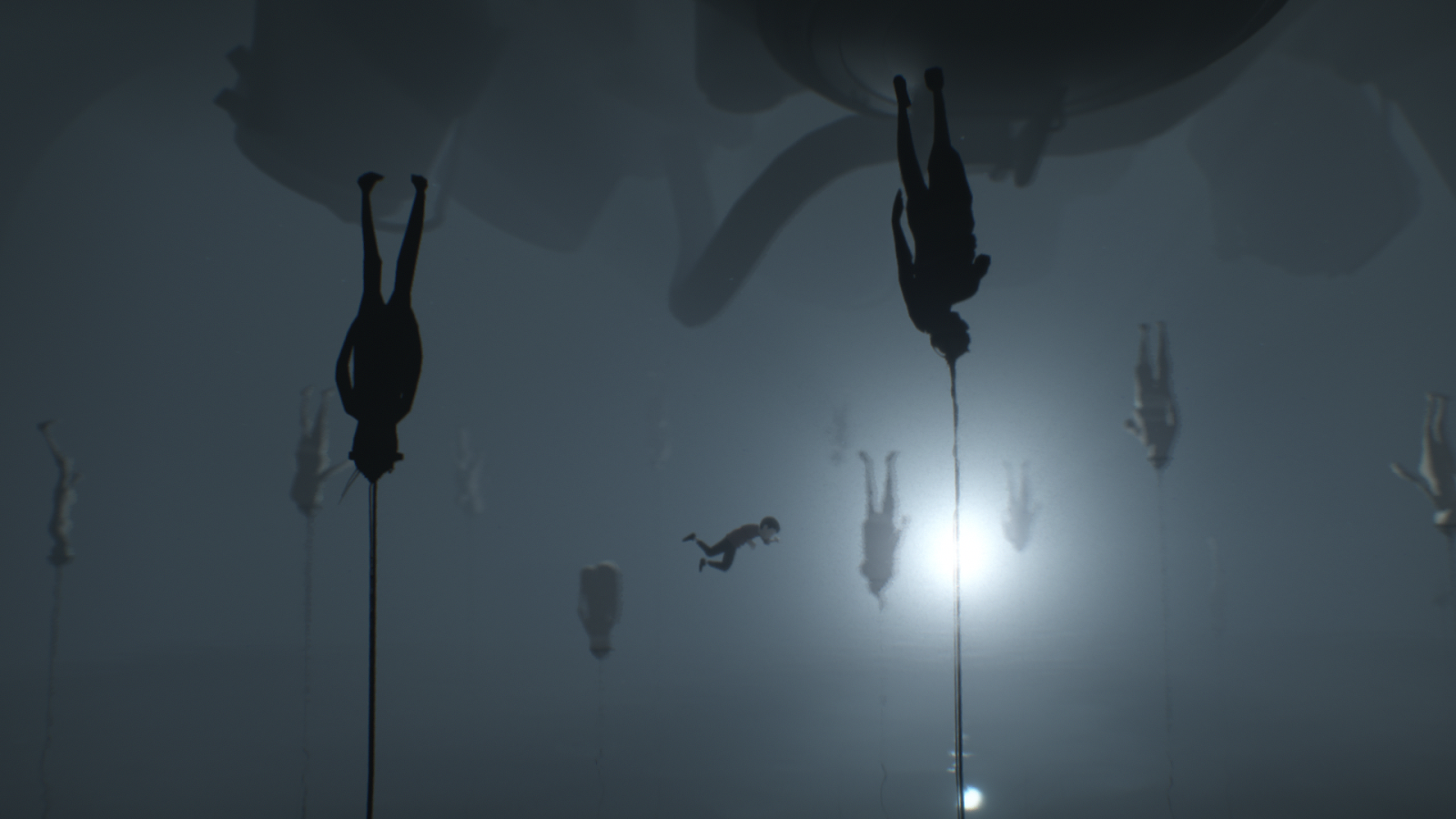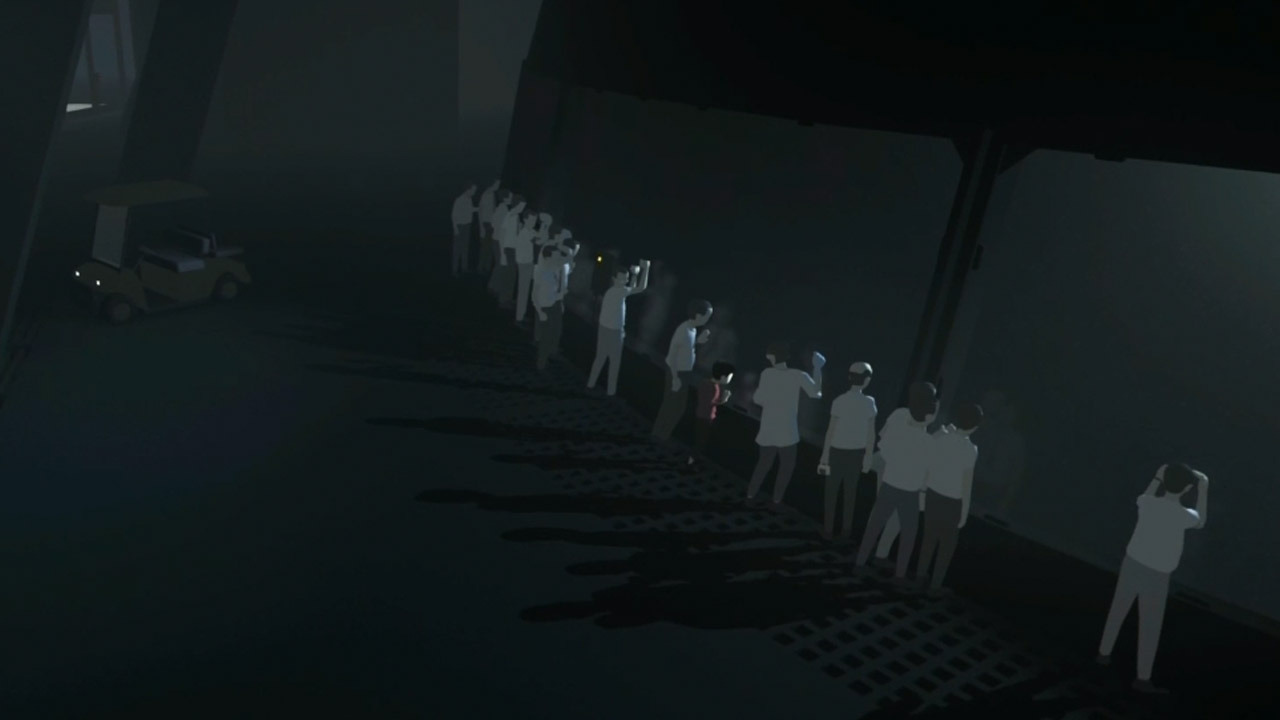Inside
Article by: Danny Pratt
Hey everyone, and welcome back to this week’s edition of Indie Innovation! This week I chose to look at developer Playdead’s newest title, Inside. Beautiful and hauntingly intriguing, Inside puts players in the shoes of a nameless young boy who must figure out what is happening to the dystopian world he inhabits.
At its core, Inside is a simple side-scrolling platformer. Using only two controls, players guide the boy to solve environmental and other physics-based puzzles in order to continue on and narrowly avoid death. The game does this in very clever ways, playing on the idea of their monochromatic world. Light sources and changes in color help to guide the player, as well as the expertly designed camera.
Inside is easily one of the best games when it comes to camera movement and overall shot placement. There were many times going through the roughly three hour story that I would stop and stare at the gorgeous vistas and backdrops offered to players. The camera is also monumental in figuring out where to go or what to do next, and the overall composition is crucial in setting the tone. Multiple times throughout the game, the boy drops down or enters an area where guard dogs are set against him. The dogs are often seen sprinting in the background, quickly gaining on the player, raising the intensity of the split-second decisions you make as you narrowly escape their ferocious jaws.

Being a puzzle game, Inside excels at giving players meaningful and thought provoking challenges. Every puzzle I encountered felt natural and grounded in the world. While there were tough puzzles (plenty of them), every single one had the mechanics and information needed to beat it clearly displayed. Sometimes, it was the camera shifting to show significance at a certain point in the landscape. Other times, there were colored cues or flashing lights that signaled where or how to interact with something. A big part in why Inside transcends so many other puzzle games is that it always feels fair. Even parts that I become stuck on, once I finally figured out that I had to move a certain item or jump at a certain time, it was all fair. The game isn’t about being cheap or relying on sheer luck. Rather, it invests its challenges into the player, resulting in an extremely satisfying feeling upon completing each one. Death was handled in this way as well, being learning moments rather than setbacks. In a game where there are no tutorials and barely any context, it was rejuvenating to realize that when done correctly, there’s really no need for the handholding traditional games offer. When done right, players are able to learn organically as if they are inhabiting that world themselves, deepening the immersion.

Like previously stated, the true beauty of this game is found in its ambiguity. Throughout the entirety of Inside, players will only see text in two places: the starting screen and the end credits. The absence of an explicitly laid-out story is quite liberating. Players begin to comprehend the story as the game progresses, piecing together information found along the way. While nothing is clearly spelled out, little nuances can be found throughout the game. When put together with the ending scene, a provocative story about control is revealed in a spectacular finale that almost immediately warrants a replay. This lack of controlled structure in storytelling lends a very helpful hand towards Inside’s main message.

While the ending is still ambiguous, it helps raise questions about the morality of governments. How much freedom do we actually have, and, if we do have any, how much of it is an illusion? Such deep and insightful questions were not what I was expecting when I chose Inside, but I was happily speechless by the end. Inside delivered incredible setpieces and memorable chapters I still reminisce about, long after I completed it. Blazing the trail for how narrative can be expressed in games, Playdead’s Inside is truly one of the most innovative titles that I can’t recommend highly enough. Try it for yourself, but be warned: existential crisis is imminent upon completion.
